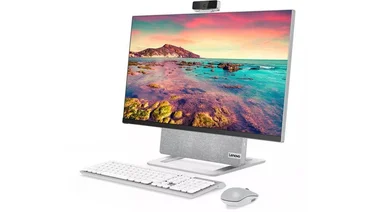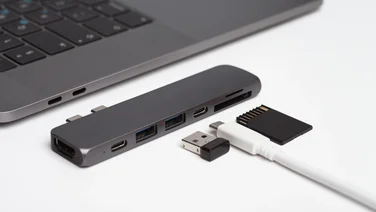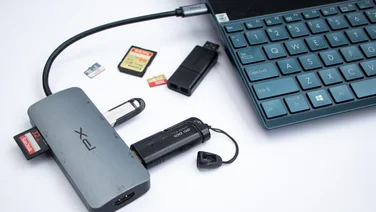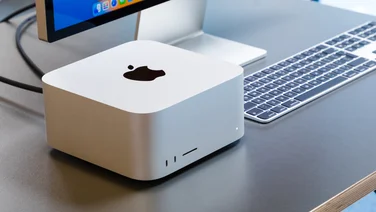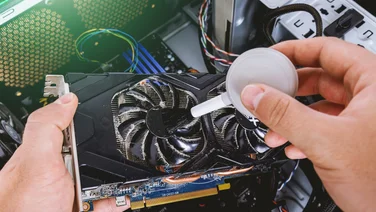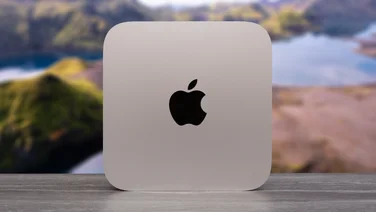To help us provide you with free impartial advice, we may earn a commission if you buy through links on our site. Learn more







- A lot of power for the money
- Ultra compact chassis
- Surprising amount of connectivity
- Some non-native apps won’t work or may be buggy
- No upgradeability
The Mac mini is the third of the first wave of M1-based Apple products we have reviewed since they were announced last year, joining the M1 MacBook Air and the M1 MacBook Pro at the vanguard of Apple’s move away from Intel.
It follows a similar template. Aside from the radical architecture revamp, Apple has otherwise made few changes to its much-loved mini PC. From the outside, the M1 Mac mini looks exactly like the previous model, but it’s on the inside where all the fireworks are happening.
Apple Mac mini review: What you need to know
Just like Apple’s M1 MacBooks, the M1 Mac mini is very impressive, delivering a huge amount of performance per pound. If you need a fast, compact PC for working from home, then there’s a lot here that’s good.
However, with not all software shifted to the new architecture just yet, you should know that you may need to run some of your favourite applications under emulation at first, and that some of your favourite Mac apps might not run perfectly – or at all.
If you don’t mind being a guinea pig for Apple, however, or you’ll never venture outside the safe boundaries of Apple’s own software stack or other native applications, then the M1 Mac mini is a great choice for a minimalist desktop setup.
M1 Apple Mac mini review: Price and competition
Part of the reason behind the appeal of the M1 Mac mini – and the appeal of its laptop siblings – is the price. At £699 for the base model with 8GB of RAM and a 256GB SSD, you’re getting a lot of performance and hardware for your money. Prices rise as you add RAM and storage but essentially, this is the same hardware as you get in the M1 MacBook Pro, minus the screen, keyboard and touchpad, of course.
| Apple M1 SoC (8-core GPU) | 8GB RAM | 16GB RAM |
| 256GB | £699 | £899 |
| 512GB | £899 | £1,099 |
| 1TB | £1,099 | £1,299 |
| 2TB | £1,499 | £1,699 |
The benchmark among compact PCs is Intel’s NUC 10 (and the forthcoming NUC 11) range of mini PCs, which typically use much slower, lower-power U-series Intel chips. At the time of writing, you can buy one of these “barebones” kits with a Core i7-10710U inside for £460, and add 8GB of RAM, a 256GB SSD and Windows 10 OS license for an extra £160, bringing the total to £620.
Intel also produces a range of more powerful “gaming” NUC PCs but the price of these start much higher than the M1 Mac mini. The (now ageing) Intel NUC kit 8i7HVK, based on the Core i7-8809G is the cheapest of these but it costs around £700 with no RAM, SSD or OS, and can’t compete with the Mac mini on performance. The newer NUC 9 Extreme range is probably a better match for the M1 Mac mini in terms of raw speed but prices begin at around £770 – again with no RAM, SSD or OS.
What you might be more interested in is a comparison with Apple’s iMac range of all-in-one PCs. Team up the M1 Mac mini with a monitor like the 27in ultrawide LG 27UL850 and you instantly have a desktop PC that’s nearly as elegant as an iMac for around £1,100. With Apple’s cheapest 27in iMac costing £1,800, that represents quite a hefty saving.
M1 Apple Mac mini review: Design and features
A Mac mini and monitor might not look as effortlessly elegant as a 27in iMac, but it’s far from an ugly pairing. Indeed, finished in silver and measuring a mere 197 x 197 x 36mm (WDH) and weighing around 1.2kg, it’s a rather attractive little thing, even though it’s no different physically than the previous Mac mini.
A small LED can be found at the front on the right-hand side and the power button is on the rear, sitting next to all the Mac mini’s various physical connections. The Apple logo is stencilled darkly on the top panel.







Given the small size of the Mac mini, there’s a fair selection here, too, with a pair of USB-A 3.1 Gen 2 (up to 10Gbits/sec) ports, two Thunderbolt 4/USB 4 USB-C ports, one HDMI 2.0 video output, plus a 3.5mm headphone jack and a Gigabit Ethernet socket for networking. As for wireless connectivity there’s Wi-Fi 6 and Bluetooth 5.







The big difference compared with previous Mac minis is there’s no way to upgrade. It is possible to pop off the lid and get at the machine’s innards by undoing six Torx TR6 security screws, but the RAM and SSD are soldered to the motherboard and cannot be replaced. It is, of course, possible to add fast storage via the Thunderbolt 4 drive if you need to, however.
READ NEXT: M1 MacBook Air review
M1 Mac mini review: Software compatibility
Not much has changed on the software front since I reviewed the M1 MacBook Pro and M1 MacBook Air last year. Pretty much all of Apple’s library of business and creative professional applications has been converted to run natively on the M1 chip and you can run some iOS applications as well.
The transition to native M1 applications is already underway elsewhere, too. A quick straw poll of the apps I use on a daily basis sees that Adobe has a (feature restricted) public beta of M1 Photoshop and BlackMagic Design has a beta of its free video editor/colour grading software, Davinci Resolve. Google Chrome is also available as a native M1 app, as are the Microsoft Edge and FireFox browsers along with Affinity Photo and Adobe Lightroom.







Even if you can’t get hold of a native M1 version of the application you want to use, you may be able to run it emulated via Apple’s Rosetta 2 runtime. Most software I’ve tried to run this way has worked very well and the process is quite simple. However, there is a plentiful list of applications that are either buggy under Rosetta 2 or don’t work at all so you should check first, before you take the leap.
Luckily, there are a few decent user-generated lists on the web, with https://isapplesiliconready.com/ being the best I’ve found, so it should be fairly easy to figure out what works and what doesn’t.
M1 Apple Mac mini review: Performance
Assuming the software you need works, then you can expect some pretty speedy performance. The M1 Apple Mac mini comes with identical specifications to the M1 MacBook Pro 13in (2020) I tested recently: it has the same actively cooled M1 processor, with an 8-core M1 GPU, 8GB of RAM and a 256GB SSD backing it up.
The MacBook Air’s lack of active cooling means it isn’t quite as capable over long periods of sustained load as the mini, and the cheaper Air’s 7-core GPU means it isn’t quite as powerful when it comes to graphics intense operations. There still isn’t much in it, though, as you can see from the charts below:



Note that I’ve run our in-house benchmarks (above) with non-native versions of Handbrake, VLC and nConvert for comparative purposes. Native versions of Handbrake and VLC have emerged since I tested the MacBooks so I’ve separated those results out into comparisons against non-M1 hardware below.
The long and short of it is you’re getting M1 MacBook Pro performance from the Mac mini for £300 less than a MacBook Air, which is pretty darned impressive. When it comes to comparisons with Intel-powered Windows 10 machines, it fares just as well.
We don’t review many compact PCs here at Expert Reviews so in the graphs below I’ve compared the M1 Mac mini with the MacBook Pro 16in instead, which uses the same Core i9-9980HK CPU as Intel’s top-end NUC 9 Extreme. I’ve also thrown in the 2020 Core i7 Apple iMac 27in and 2018 Core i3-8100B Mac mini to give further context:


Here, I’ve substituted M1 native versions of Handbrake and VLC and re-ran our in-house 4K media benchmarks to give a fairer comparison of performance versus its Intel-based rivals:

Finally, and just for fun, I also ran a comparison of a video render in DaVinci Resolve with my desktop PC (6-core AMD Ryzen 5 3600, 16GB RAM, AMD Radeon RX 5600 XT). Here, a five-minute 1440p clip upscaled to 4K with a simple colour-space transform took the M1 Mac mini 5mins 17secs to complete where the PC took more than double that time at a total of 12mins 20 secs
Essentially, give or take, you’re getting a similar level of performance in the M1 Mac mini as the MacBook Pro 16in I reviewed in late 2019. Not bad considering that was a £3,789 laptop at the time.
READ NEXT: M1 MacBook Air review
M1 Apple Mac mini review: Verdict
PC fans will, quite rightly, point out that you probably wouldn’t want to play games on an M1 Mac mini. If you want to do that, stick with a home-built PC or a games console like the Sony PS5 or Xbox Series X.
But my overall verdict on the M1 Mac mini is the same as for its stablemates: the M1 MacBook Air and the M1 MacBook Pro. It’s great and, if you’re looking for a fast, unobtrusive, quiet PC that will get you through your working day without fuss, then you should probably buy one.







| M1 Apple Mac mini | |
|---|---|
| Processor | Apple M1 |
| RAM | 8GB |
| Additional memory slots | No |
| Max. memory | 16GB |
| Graphics adapter | Apple M1 (8-core) |
| Graphics memory | Unified |
| Storage | 256GB |
| Optical drive | No |
| Memory card slot | No |
| 3.5mm audio jack | Yes |
| Graphics outputs | HDMI 2.0 / USB-C (Thunderbolt 4 / USB 4) |
| Other ports | USB Type-A x 2 (3.2 Gen.1); 2 x USB-C (Thunderbolt 4 / USB 4) |
| Speakers | Mono |
| Wi-Fi | Wi-Fi 6 (802.11ax) |
| Bluetooth | Bluetooth 5 |
| NFC | No |
| Dimensions, mm (WDH) | 197 x 197 x 36mm |
| Weight (kg) – with keyboard where applicable | 1.2 |
| Battery size (Wh) | N/A |
| Operating system | MacOS |





